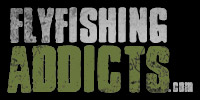anacrime wrote:But many fishing folks refer to lake run trout as being steelhead. Not saying it's right, it's just accepted. Which is fine with me.
Agreed... They are steelhead in the sense of the size/power of fish, their behavior, and methods to target them. They just don't meet the life history requirements of the term.
anacrime wrote:Ray I think you're over simplifying things, especially if you want to get into genetics. It's easy to have cut and dry requirements on paper, but distinguishing individual fish in a watershed with "two populations" (as you put) is another story that I don't even think genetics could decipher.
If you're implying that sea run O. mykiss, have a different genetic makeup than non sea run O. mykiss (which is what I got from genetic mixing), how do you say that steelhead fry are not steelhead? Are there two requirements for being a steelhead, both having the "gene" (perhaps meme?) and traveling to the sea? And are you saying that those w/out the gene can't go to the sea?
Not sure what that last quote was supposed to mean. We're talking about rainbow trout native to the west coast that have been transplanted to lakes.
What I meant by Genetic mixing is that according to my readings, in a stream with a resident population and a stealhead population, they are NOT significantly distinct genetically in most cases. A resident fish may have 2 steelhead parents, and a Steelhead may have 2 resident parents, or 1 of each.
There is sometimes a partial genetic separation due to size, behavior, etc... (A 12" resident male is not a very attractive mate to a 28" steelhead female... etc...), but there is still considerable mixing. Hence, the "Life History" is the only way to establish a guideline.
A certain percentage of all rainbow trout, given the opportunity, will go to sea and become steelhead.


